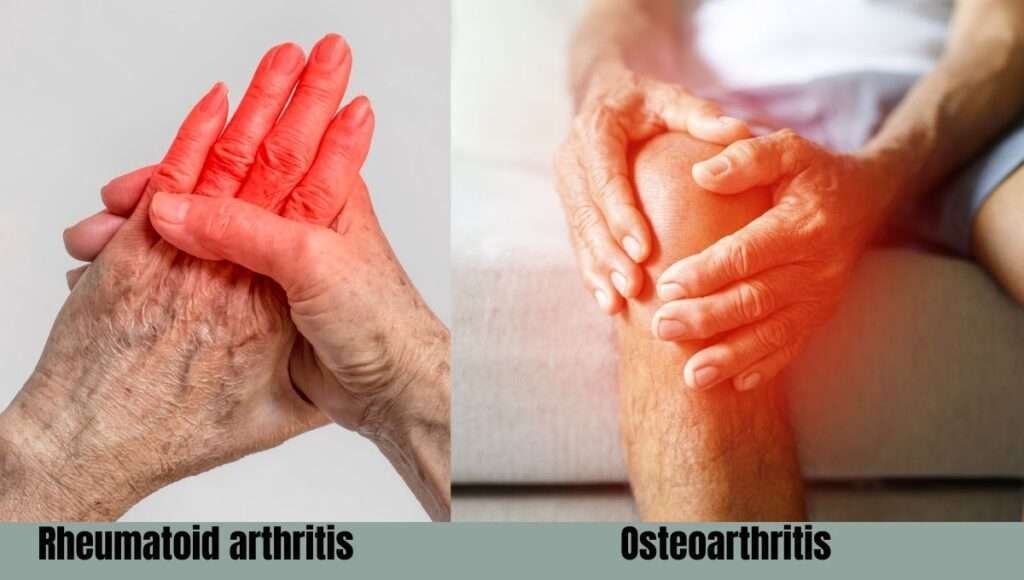Introduction
One condition that affects the joints is arthritis. Arthritis is an inflammatory illness that causes pain and swelling in one or more joints. Approximately 54 million people in the US experience one of the more than 100 different kinds of arthritis. The most common type, osteoarthritis (OA), affects around 32 million people. While some forms of arthritis result from everyday wear and tear, others stem from autoimmune or inflammatory diseases.
Is it possible to reverse arthritis? The pain and other symptoms of arthritis cannot be cured, but they can be managed with medicine and lifestyle modifications. Among the treatment possibilities are joint surgery, physical therapy, and occupational therapy. After evaluating your symptoms, an orthopaedic specialist will recommend the best course of treatment. Most people are able to control their arthritis and carry on with their preferred pastimes.
[ez-toc]

Types of Arthritis
Gaining knowledge about the two most prevalent types of arthritis, rheumatoid arthritis and osteoarthritis, is vital.
Osteoarthritis: is the most common type of arthritis, and it primarily affects older people. It occurs as the cartilage that cushions the ends of your bones ages and becomes less effective. Reduced joint flexibility, discomfort, and swelling may result from this.”
Rheumatoid arthritis: most commonly affecting the joints, rheumatoid arthritis is an autoimmune illness. It happens when the immune system unintentionally targets healthy joint tissue, resulting in joint damage, inflammation, and pain.

Arthritis symptoms
“Although it can present with a variety of symptoms, arthritis is usually defined by inflammation and stiffness in the joints. Among the most typical signs of arthritis are: ”
- Joint stiffness and discomfort can be sporadic or continuous, and they frequently get worse as you move. There may also be redness and swelling in the vicinity of the afflicted joints.
- Arthritis-related reduced range of motion can make it challenging to perform regular duties.
- In certain instances, people may feel heated around the afflicted joints, have muscle weakness, or sense weariness.
- A fever, weight loss, and overall malaise are systemic symptoms that can accompany certain forms of arthritis, such as rheumatoid arthritis.
- Strategies for Minimising Arthritis Pain and Medically Managed Arthritis Treatments: wholesome eating
Maintaining joint health and reducing arthritis symptoms can be achieved by eating a balanced diet. - Doctors often recommend fruits, vegetables, and whole grains because of their anti-inflammatory properties.
- Incorporate meals that are rich in Omega-3 fatty acids into your diet. Maintaining a low body weight through healthy eating can also help reduce sensations of discomfort and the strain that a higher body weight puts on many joints.

How do I treat pain from arthritis?
Physical Therapy: Based on your individual needs and restrictions, a physical therapist can create an exercise programme just for you. You can increase your general mobility, lessen pain, and improve joint function with the use of gentle, targeted workouts. Getting regular physical therapy sessions will help you manage your arthritis discomfort.
Lifestyle Modifications: You can greatly influence the management of your arthritis pain by making changes to your everyday routine. Consider making the following lifestyle adjustments:
Diet: Eating a diet high in fruits, vegetables, whole grains, and healthy fats can help lower inflammation associated with arthritis. This is known as an anti-inflammatory diet.
Weight management: Reducing stress on weight-bearing joints, like the knees and hips, can be achieved by maintaining a healthy weight.
Rest Enough: Getting enough sleep is essential for controlling pain and inflammation. Make sure you obtain adequate restful sleep and pay attention to your body’s needs.
How do I treat pain from arthritis?
Exercise: Keeping up a regular exercise regimen is essential for managing arthritis pain. Walking, riding, and swimming are examples of low-impact workouts that can help increase flexibility, strengthen the muscles surrounding the joints, and lessen pain. Seek advice from a fitness expert or physical therapist while devising a safe training regimen.
Heat and Cold Therapy: You can reduce the discomfort associated with arthritis by applying heat or cold to the afflicted joints. Heat therapy helps relax and release tissues, while cold packs can lessen swelling and irritation. Compare the two and decide which works best for you.
Learn how to safeguard your joints when going about your everyday business. Joint stress can be decreased with easy methods, including using bigger joints rather than smaller ones, avoiding tight grips or pinches, and maintaining good posture.
Balanced Lifestyle: The secret to controlling arthritis pain is to lead a balanced lifestyle. Make sure you strike a good work-rest balance, make reasonable goals, and refrain from overdoing it. Observe the signs your body provides and adjust your actions accordingly.
Eliminate negative behaviours: Even though they know that certain behaviours are bad for them, many people nevertheless engage in them, such as smoking, eating junk food, and drinking alcohol. However, if you have arthritis, you should think about giving up all of these bad habits. Develop healthy new habits that will help you manage your arthritis pain, such as eating well, exercising, and going to bed early.

medical equipment
“Although it may be difficult to accept, you may need a cane or walker to improve your mobility both inside and outside of your home. Additionally, it may also help prevent further accidents that could exacerbate your suffering. Accessories such as dressing aids and grabbers can also make a big difference in the lives of”
MEDICATIONS
Some popular medications for the treatment of arthritis include:
Analgesics: Analgesics reduce pain without changing inflammation.
Non-steroidal anti-inflammatory medications (NSAIDs): These medications relieve inflammation as well as pain. NSAIDs include over-the-counter or prescription medications such as ibuprofen (Advil, Motrin IB) and naproxen sodium (Aleve). Applicable lotions, gels, or patches that target particular joints are available for certain NSAIDs.
MEDICATIONS
Reversants: Some creams and lotions contain menthol, sometimes known as capsaicin, which is the hot pepper’s active ingredient. They can change pain signals and reduce pain when rubbed on the skin over a painful joint.
RA is treated using disease-modifying antirheumatic drugs (DMARDs). DMARDs lessen or completely stop the body’s immune system from attacking the joints. Trexall and methotrexate are two instances of hydroxychloroquine (Plaquenil).
“Medications genetically engineered to target certain protein molecules involved in the immune response are known as biologics. Two examples are infliximab (Remicade) and etanercept (Enbrel). In contrast, prednisone and cortisone are examples of corticosteroids that lower inflammation and inhibit the immune system. Flagler Health + Is Available To Assist.”
Foods that Reduce Inflammation
- Fatty Fish: Omega-3 fatty acids, which have anti-inflammatory qualities, are abundant in salmon, mackerel, and sardines.
- Berries: Antioxidants found in raspberries, strawberries, and blueberries help reduce inflammation.
- Nuts and Seeds: Walnuts, flaxseeds, and almonds are excellent providers of anti-inflammatory and healthful fats.
- 4. Leafy Greens: Rich in vitamins, minerals, and antioxidants, vegetables like kale and spinach are an excellent source of nutrition.
- Turmeric: This spice contains an anti-inflammatory substance called curcumin.
- Ginger: For many years, ginger has been use to lower inflammation and ease pain.
- Green Tea: Polyphenols found in green tea have the ability to lower inflammation.
Items to Steer Clear of
- Processed foods: These frequently have trans fats and a lot of salt, both of which can make inflammation worse.
- Sugary Foods: Consuming a lot of sugar causes an increase in inflammation.
- Red Meat: Steer clear of red meat since it can aggravate inflammation.
- Dairy Products: Dairy products have been known to aggravate arthritic symptoms in certain people. Try different dairy-free options and see if that makes a difference.
- Alcohol: Drink in moderation, as too much of it can exacerbate inflammation.
- Nightshade Vegetables: Consuming nightshade vegetables such as tomatoes, peppers, and eggplants has been link to height discomfort for some arthritis sufferers. Keep an eye on how these foods affect your health.

